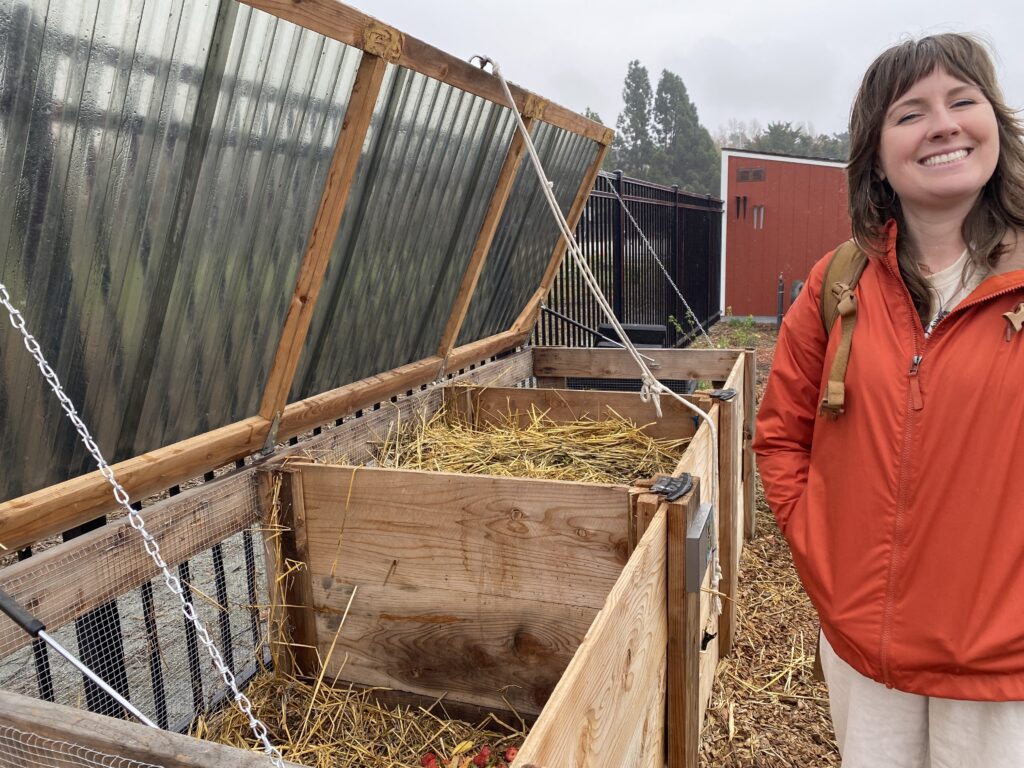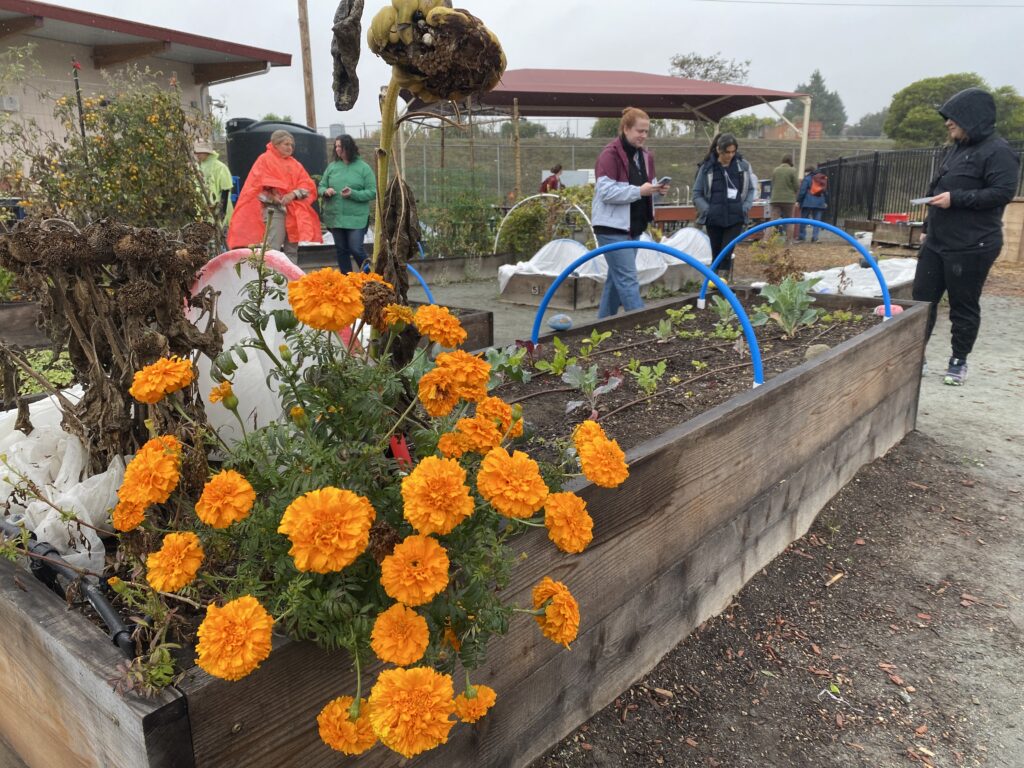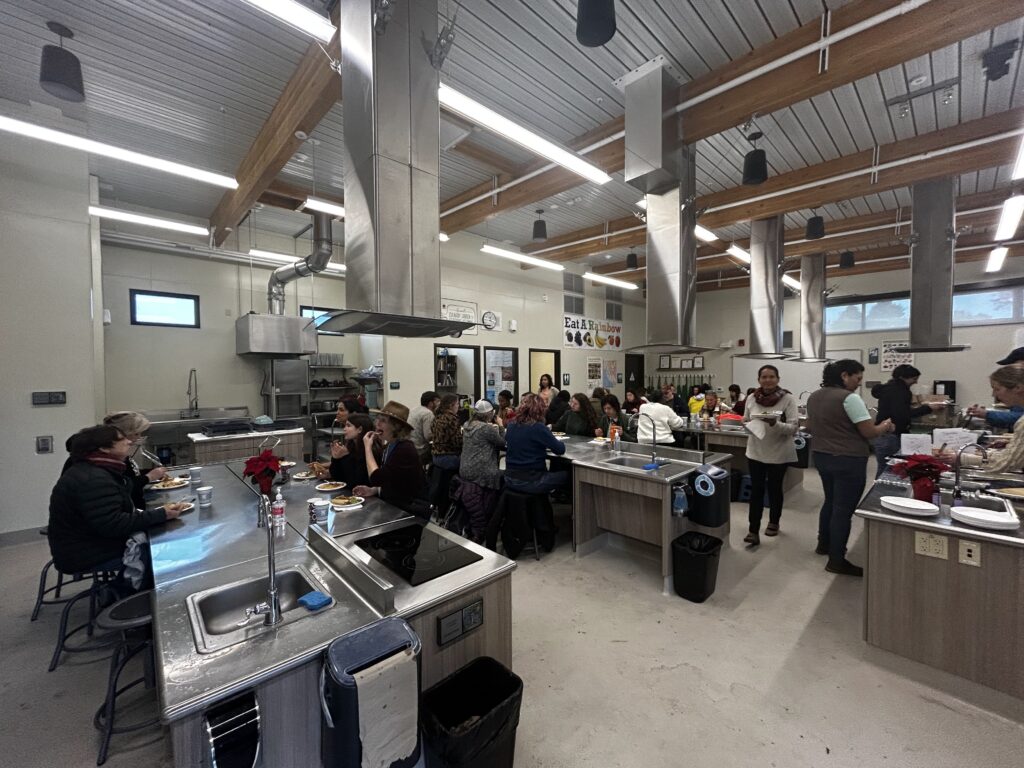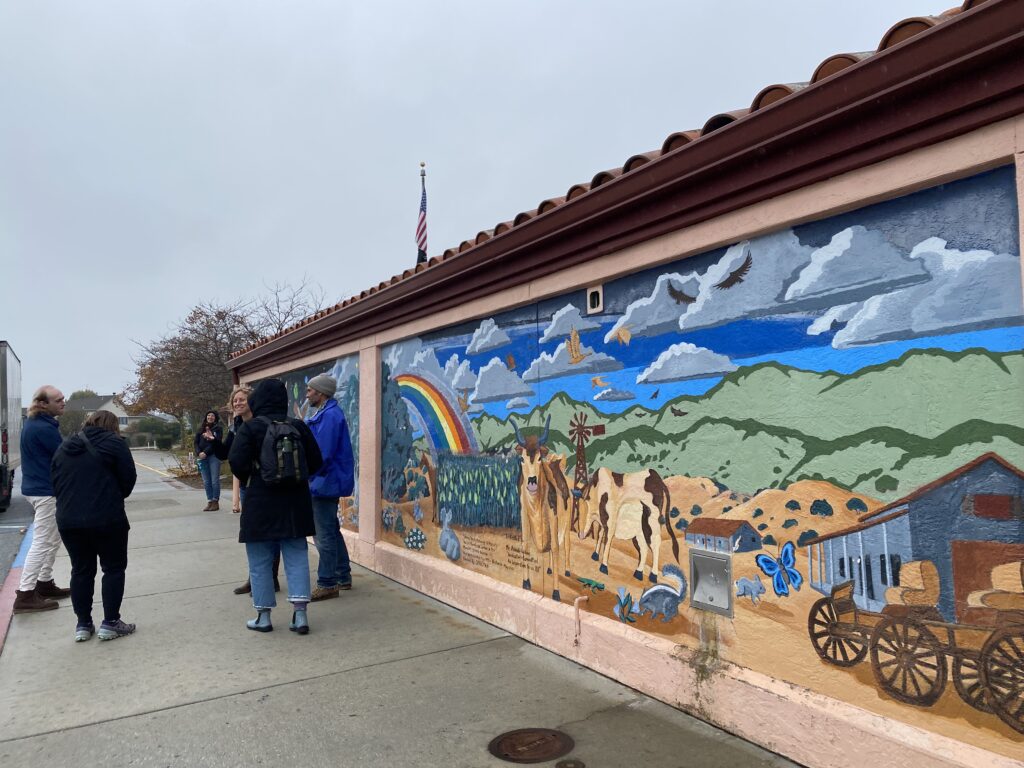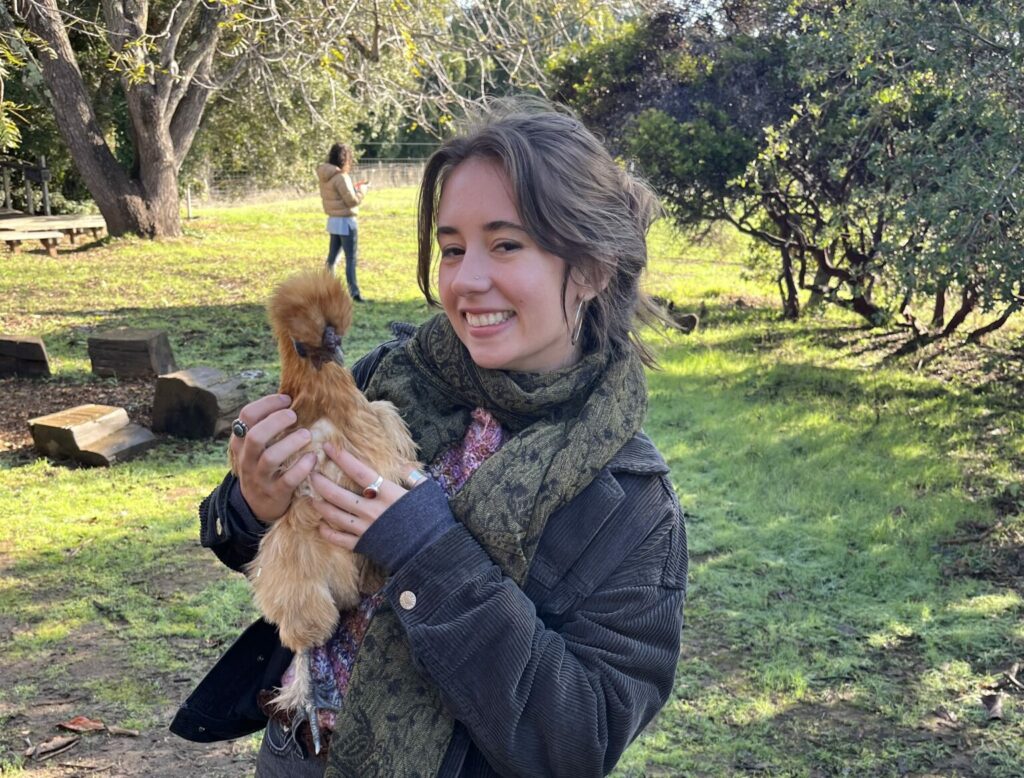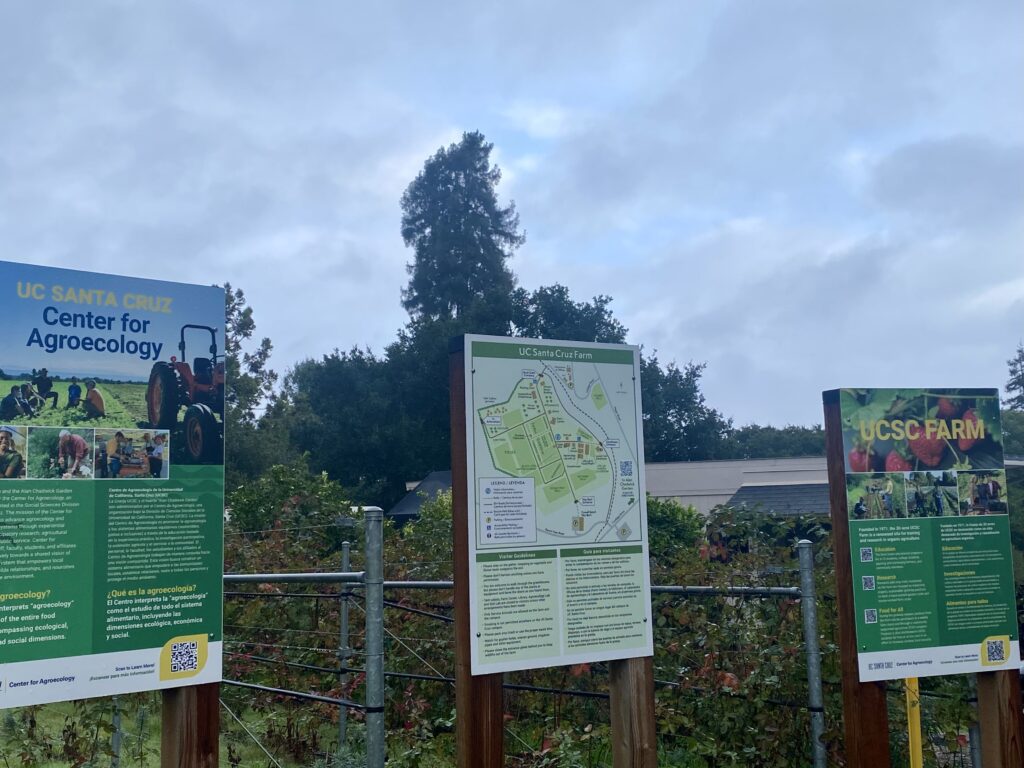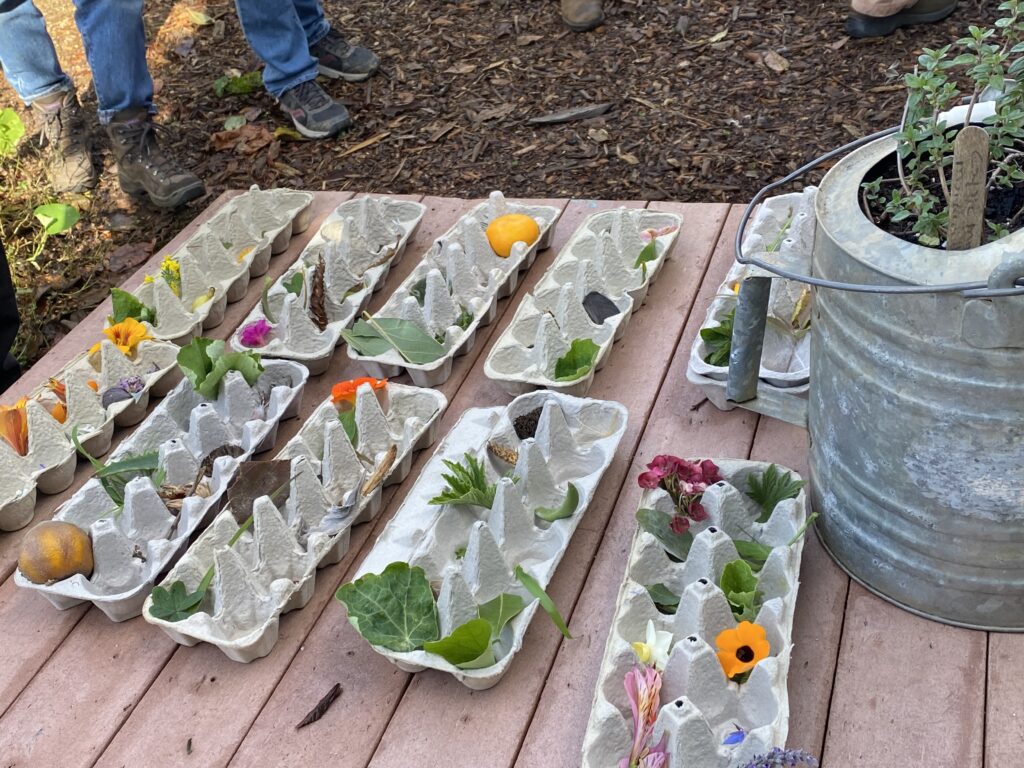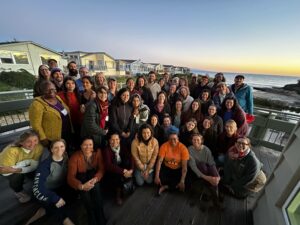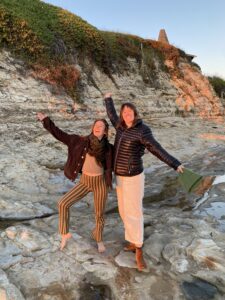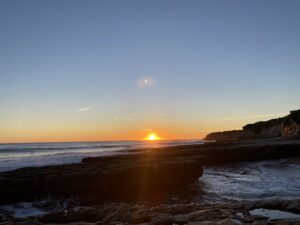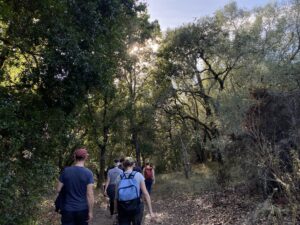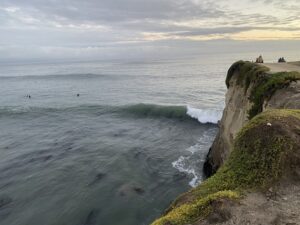By: Tatiana Gonzalez, Lead Educator
Each year, the School Garden Support Organization (SGSO), in partnership with Whole Kids Foundation and Life Lab, holds a week long conference in Santa Cruz, California known as the SGSO Leadership Institute. Forty national farm to school leaders work together to collaborate on ideas of enhancing equity within garden spaces, developing closer relationships with school or district partners, as well as gathering ideas that they can all bring back to their own school garden organizations. This gathering creates a space of inspiration for budding programs and program relations, while also generating new connections from around the country.
Members of the Education Department at the Wylde Center, Dory Cooper and Tatiana Gonzalez, were honored to be attendants to this pivotal summit this year – and so we’d like to share some highlights that we learned and what we experienced!
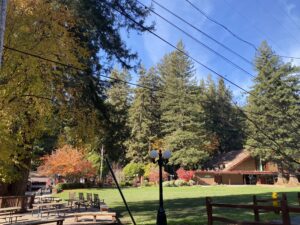
Day 1 Highlights: Warming Up and Learning About One Another
Once we settled into our stay with dinner, a game night and quality rest, we began the next morning by discussing group agreements, personal reflections and organizational goals.
During a personal reflection exercise, every attendant was encouraged to share one word that comes to mind when they think of school gardening. This was a highlight because although it was a simple exercise, it also allowed everyone to express why they are devoted to this work. It also provided new perspectives that the Wylde Center could integrate into our own farm to school work. Some example words included:
Connection
Grounded
Self-expression
Magic
Reciprocity
Justice
In addition to personal reflections about school gardening, we were each asked to share one goal that we would like to focus on, and continuously refer back to, during the conference. Dory’s goal was to implement practical ways to support new garden educators, while my goal was to focus on creating and leading culturally relevant lessons.
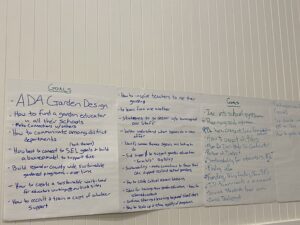
[Personal and organizational goals set by attendees for throughout the conference]
Later that morning, we discussed organizations’ unique program models, and individual skills that each participant brings to the farm to school movement. This was a fascinating way to meet everyone, and a wonderful way to network with others who have skills that you would like to inherit or work on yourself. This activity was done by peer-to-peer learning where we shared what our partner shared with us, to the larger group.
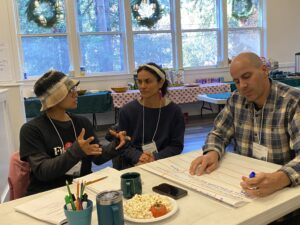
[Shanice Harris from Fit 4 Kids discussing their partners’, Melanie Cross from DNATL Community Food Council, program model]
Diversity, Inclusion + Equity:
Later that evening, we participated in Diversity, Equity, and Inclusion related activities, where we reflected on our race, our gender, and the other parts of our identity that others may or may not notice. We made “identity sunglasses”, where we drew and expressed the facets of our identities that are important to us, and put them on display so others could get to know us through our self-perceived lens. This was an important link into how we should value diversity within our students in garden spaces, and how creating an inclusive space for all students maximizes safety in learning.
Life Lab facilitators also discussed ways that they focused on enhancing DEI practices within their own organization. Life Lab has implemented required monthly working groups, where they actively discuss topics such as living land acknowledgments, indigenous perspectives, fair and equitable hiring, community outreach, and more. They also engage in learning community meetings where staff members share books, webinars, articles and other readings, and engage in active discussion about the material.
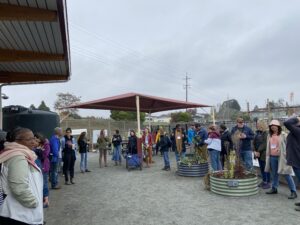 Day 2 Highlights: School Visits
Day 2 Highlights: School Visits
This was an exciting day for many reasons, but most importantly because we were going to be visiting different school garden programs in California. We began our tour with Starlight Elementary, where we had free time to explore the garden, including their herb garden, small berry orchard, compost pile, and standard fruit and vegetable garden beds.
Starlight Elementary also features a state of the art community teaching kitchen, where upper-elementary age students enrolled in the school will learn the basics of cooking under the guidance of a kitchen educator. We were honored to eat lunch in this beautiful space, basking in the inspiration and potential of what this space has to offer.
After visiting Starlight Elementary, and engaging in round table discussions about the challenges of running school garden programs, we split up into two groups to experience two different elementary schools: Del Mar Elementary and Ann Soldo Elementary.
Del Mar Elementary
At Del Mar Elementary, we learned more about implementing farm to school programs within School Nutrition through an afterschool program pilot known as FoodLab. In this pilot, 8-10 fifth graders help scratch cook the meals served at school lunch with the assistance of a cafeteria manager and a trained chef. Through this program, students learn about basic culinary preparations such as measuring, baking, slicing and more. As lucky attendants, we were able to sample some of the food they serve during their school breakfasts and lunches. The menu included:
- Egg frittata with ham and cheese, served with a roll
- Cheese enchiladas, served with coleslaw and sweet peppers
- Chocolate and beet (yes, beet!) muffins
It was all delicious, nutritious and filling!
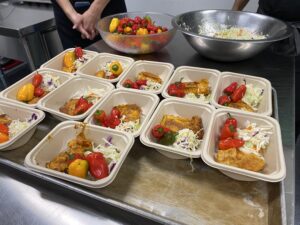
Other highlights of visiting Del Mar Elementary included learning about how students in the garden program participated in growing hundreds of pounds of San Marzano tomatoes that would then be used to make pasta sauce for school lunches. Learning about this close-looped system was inspiring, and definitely got us thinking about how to further incorporate school gardens with school nutrition goals.
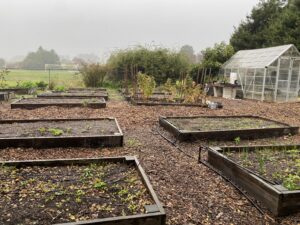
Ann Soldo Elementary
At Ann Soldo Elementary, we were given a garden tour by the school gardeners themselves: the fourth grade students in the afterschool program. This sweet guidance included students sharing which plants are special to them, along with giving us different things to taste, mimicking their own experience when they are out in the garden with educators. Afterwards, we all made nature art together featuring items from the garden.
Something notable about Ann Soldo’s school garden is that it was tucked away into a corner of their courtyard. However, this did not detract from the abundance offered within their space. Their garden served as a gentle reminder that you do not need large, expensive gardens or kitchens in order to make an impact or to make a school garden feel like a place to belong.
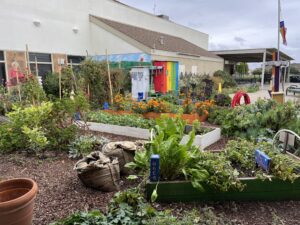
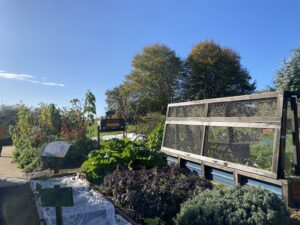
Day 3: Visiting Life Lab
On Thursday, my favorite day of the conference, we went to Life Lab’s headquarters, which is located on UC Santa Cruz’s campus and farm. This day was devoted to focusing on professional development for educators within school garden programming, while also talking about Life Lab’s work and impact in training educators around the country.
We were given the opportunity to enhance leadership skills for professional development within our organizations through engaging in different activities, ranging from think-pair shares about training and development, group discussions, and simulation of Life Lab garden lessons.
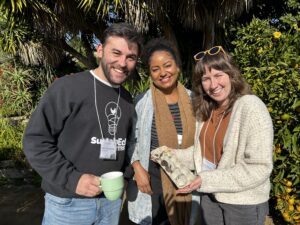
[Dory working with SustainEd Farms on the Life Lab lesson: Antonyms in the Garden]
We applied the “Why, Try, Apply” approach to encourage reflection and practice for educators so that they may participate in a more engaging learning environment, as well as to enhance understanding as to why these lessons are important for students.
We practiced a 1-on-1 coaching session for educators with the education director in order to strengthen educational training abilities. During this activity, half of the group pretended to be second graders, while the other half took notes on the educator and how they went through the lesson – we also discussed what the best ways to provide constructive feedback to peers would look like. Ubiquitously, it seemed that most educators would like to receive feedback in a “validation sandwich”, with a positive message starting and ending the coaching, with improvements suggested somewhere in the middle. Additionally, asking educators to reflect on what it is that they did well or poorly can create self awareness and opens the space for a more open coaching session.
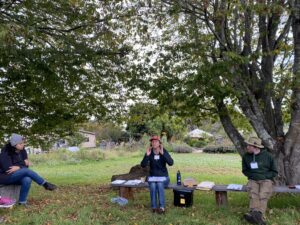
[Life Lab Education Director Whitney leading us through a sample educator 1-on-1 coaching session]
After a busy day, and a discussion of outdoor classroom management, we were given a tour of Life Lab’s garden space, along with UC Santa Cruz’s farm.
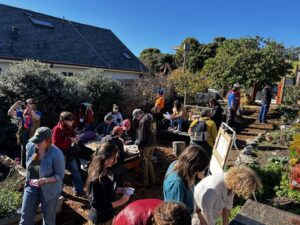
Day 4: Pacific School
On our last official day of the conference, we visited Pacific Elementary School. This was a very special visit, not only because it was a rock’s throw away from the Pacific Ocean. At this school, the 5th and 6th grade students plan and prepare the school lunches each and every day. The students work in the kitchen once a week in small groups of 5-7. Each student is assigned a specific role within the kitchen, from prep-person to baker, with each position rotating every month. If you would like to learn more about their FoodLab program, please visit their website.
We were lucky enough to be hosted for lunch by these inspiring students. They served us while we sat at the tables, looking out at the ocean, scanning for whales.
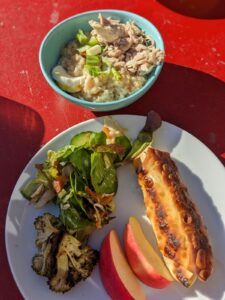
[School lunch at Pacific Elementary: salad, roasted broccoli, vegetable spring roll, apples, and chicken chao ga with a hard boiled egg and green onions]
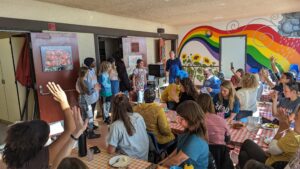
[Q+A session with students]
In addition to being provided a delicious lunch, created by devoted students, we spent some time in the Pacific School Garden making flower print bookmarks, and having a Q+A session with the Superintendent/Principal, Mr. Gross.
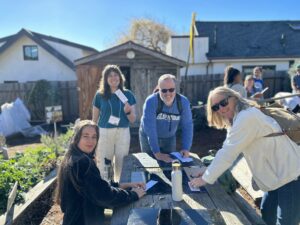
[Dory and Tatiana working on flower print bookmarks using materials from the Pacific School Garden Space]
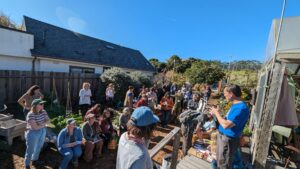
[Q+A session with Principal Mr. Gross]
In review, this experience showed Dory and I the diversity of school garden program models, different ways to collaborate with other organizations and district level partners, methods for training educators, as well as incorporating a range of ideas on how to enhance cultural and gender inclusivity within garden spaces.
While we were in meetings, workshops, and training during most of the conference, we were also able to participate in several beach outings and bonding opportunities with several of the other conference attendees. These cumulative experiences amounted to a truly fulfilling adventure, one that I will be reflecting on for a while. Please reach out to tatiana@wyldecenter.org or dory@wyldecenter.org if you have any questions about the SGSO Conference.
Sign-up for our Farm to School Newsletter to receive garden tips, recipes, lesson plans, and grant opportunities!
Book your 2023-2024 school programs here.


